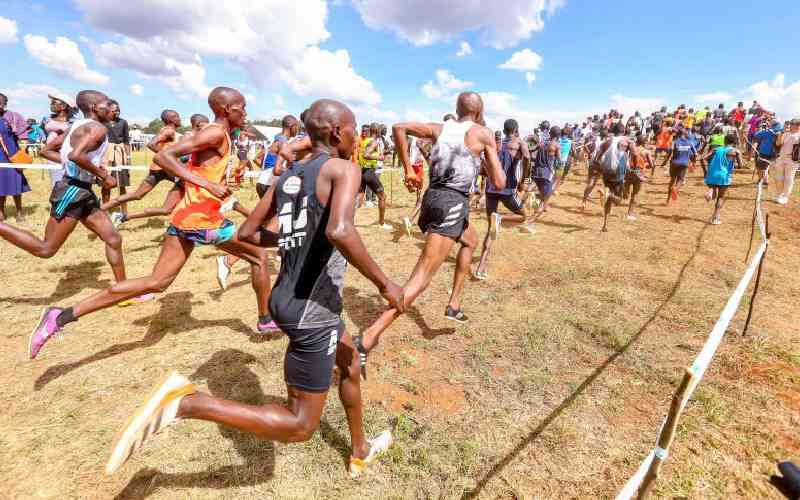While grappling with the old puzzle of just what it is that makes athletes from the North Rift world beaters on the race track, an old colleague framed the question in novel manner.
Rasna Warah sought to debunk the oft-advanced argument that runners from Nandi and Marakwet counties rise to greatness because they were used to running in rugged hilly country from childhood.
If this were the case, she posed, why then was it that I could not run to save my life yet I grew up in even more challenging terrain on the eastern slopes of Mt Kenya?
Indeed she was spot on a couple of points.
It is true the topography of much of Igoji is such that one often wonders how anything but mountain goats and monkeys manage to survive and even thrive there.
In some parts of Uturine village where I was born and bred, houses are perched on such precarious hillsides it is a wonder that small children do not routinely fall off and disappear into the depths below.
It therefore follows that if rough terrain is what makes tough athletes, I would have been one of the best.
Yet, the only competitive races in which I ever made any sort of mark in were the annual sack and egg-and-spoon races I took part in as part of the ‘infant’ team during my early primary school days.
The sack races involved little boys getting into gunny bags and trying to run from point A to point B, with the inevitable result of little feet getting entangled in the sack and a running track dotted with bundles of fallen runners.
The egg-and-spoon races were equally tricky; eager runners would start off with the spoons supported on outstretched arms, but soon the racetrack would be full of children weeping over broken eggs.
If training has anything to do with the making of great athletes, I should have been right up there alongside the likes of Kipchoge Keino.
During my primary school years I ran and walked about 15 kilometres round trip daily between home and school from Monday to Friday except during school holidays.
This was not because we did not have schools in my neighbourhood; indeed, there was one less than a kilometre away and I passed it daily. The problem was the religious attitudes of the time. I grew up in a strict Presbyterian family and the only PCEA-ran school was seven and a half kilometres away.
The ones in between were, unfortunately, all Catholic-run.
So we had the ridiculous situation where on the way to school in the morning, nice little Presbyterian children would meet nice little Catholic children going to school in the opposite direction and the two groups would stop briefly to hurl sneers and taunts at each other.
Stay informed. Subscribe to our newsletter
The ritual would be repeated in the afternoon.
Perhaps my aversion for any physical exercise beyond lifting a bottle of beer is rooted in those early days in school.
I remember times as a tiny boy when I would be forced to run the seven and a half kilometres to school in the rain lugging a huge school bag and arrive in school crying and late.
My rear, from the feet to the school uniform and even up to the head would be splattered with mud, to jeers from bigger boys who would say, “And here now comes Ben Jipcho”— in reference to a noted athlete of the day.
I am happy to note that nowadays, the denominational Apartheid of my day is no more and children can now attend school wherever it is most convenient.
 The Standard Group Plc is a
multi-media organization with investments in media platforms spanning newspaper
print operations, television, radio broadcasting, digital and online services. The
Standard Group is recognized as a leading multi-media house in Kenya with a key
influence in matters of national and international interest.
The Standard Group Plc is a
multi-media organization with investments in media platforms spanning newspaper
print operations, television, radio broadcasting, digital and online services. The
Standard Group is recognized as a leading multi-media house in Kenya with a key
influence in matters of national and international interest.
 The Standard Group Plc is a
multi-media organization with investments in media platforms spanning newspaper
print operations, television, radio broadcasting, digital and online services. The
Standard Group is recognized as a leading multi-media house in Kenya with a key
influence in matters of national and international interest.
The Standard Group Plc is a
multi-media organization with investments in media platforms spanning newspaper
print operations, television, radio broadcasting, digital and online services. The
Standard Group is recognized as a leading multi-media house in Kenya with a key
influence in matters of national and international interest.








